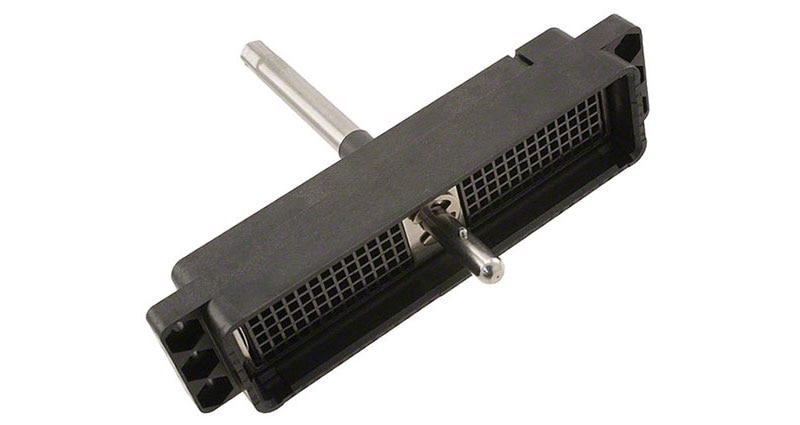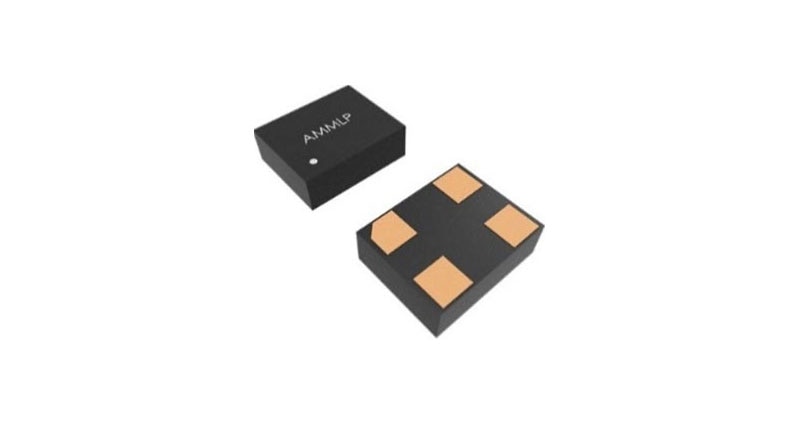Simplifying VPX Integrations with Modular VITA 67.3 RF Connectivity
Modularity is no longer optional for modern embedded systems—it’s essential. Soaring signal bandwidths and increasing system complexity demand a design framework that delivers flexibility, scalability, and reliability. VPX systems provide that foundation, and within this architecture, the VITA 67.3 standard defines blind-mate coaxial RF connections, enabling clean, compact, and high-performance RF integration in modular designs.
VPX, based on the VITA 46 standard, is a rugged system architecture that enables designers to plug functional modules—such as processors, FPGAs, and RF front-ends—into a shared backplane. The VITA 67.3 standard extends this architecture by defining blind-mate coaxial RF connectors that automatically engage when a module is inserted into the chassis.
This eliminates the need for external cabling or manual RF hookups, enabling seamless, high-density signal routing through a backplane. This means fewer cables, cleaner layouts, and scalable systems that are easier to build, maintain, and evolve over time. This standard is a key factor in creating smaller, lighter, more cost-effective applications without sacrificing functionality.
For product designers, VITA 67.3 simplifies the integration of high-frequency RF into complex embedded systems, without compromising modularity or signal integrity. VITA 67.3 is designed to coexist with VITA 46 (digital signals) and VITA 66.5 (optical signals), allowing all three domains—RF, digital, and optical—to be integrated within a single, compact VPX system.
This reduces design complexity, accelerates development, and supports field-upgradeable applications. It also provides a reliable path to build applications compliant with the U.S. Department of Defense (DoD)-backed Sensor Open Systems Architecture (SOSA) initiative that defines modular, interoperable hardware standards for embedded systems, particularly those used in defense, aerospace, and intelligence applications.
Amphenol SV Microwave, an active member of the SOSA™ electromechanical hardware group, provides a complete line of VPX/VITA solutions, including three tiers of connectors for VITA 67.3-compliant VPX systems, each tailored to different density, frequency, and space requirements. The company offers complete solutions spanning cable assemblies, adapters, backplane and plug-in contacts, and installation and removal tools.
Amphenol's VITA 67.3 SMPM and SMPS product lines (Figure 1) have proved to be reliable solutions for designers building RF-capable VPX systems.
 Figure 1: A view of an SMPS connector module (left), side by side with two SMPM options. (Image source: Amphenol SV Microwave)
Figure 1: A view of an SMPS connector module (left), side by side with two SMPM options. (Image source: Amphenol SV Microwave)
The SMPM line of miniature push-on connectors is a dependable option for systems that require solid RF performance without needing extremely high frequency or density. Standard designs support DC to 26.5 GHz frequencies, while extended range designs can support up to 65 GHz. They are commonly used in applications like radar control modules and secure communications equipment. Their compact size and blind-mate feature make them easy to install and maintain, while still holding up to the mechanical demands of field use.
With a smaller form factor, the SMPS line enables high-density RF modules where space is limited but signal performance must be very high. Supporting up to 65 GHz frequencies, they provide more capability in smaller footprints without sacrificing signal integrity or reliability, which is needed for many modern electronic warfare, Electronic Intelligence (ELINT), and compact phased-array radar systems.
Ultra-compact NanoRF
Amphenol Microwave SV also offers an ultra-compact solution—NanoRF—for high-channel-count VPX modules. This line is designed for greater density and frequency—up to 70 GHz— targeting applications where space and weight are at a premium. For example, the 23.98 mm by 13.92 mm 9351-80004 hybrid RF- and fiber-port module (Figure 2, left) mounts on a VPX payload card such as an RF board or sensor input card, and mates with the 9341‑80005 backplane housing module (Figure 2, right) to form a VITA 67.3-compliant blind-mate interconnect to reduce cabling and save board space.
 Figure 2: The 9351-80004 backplane module (left) can mate with the 9341‑80005 plug-in module (right) to form a high-density RF interconnect that is VITA 67.3 compliant. (Image source: Amphenol SV Microwave)
Figure 2: The 9351-80004 backplane module (left) can mate with the 9341‑80005 plug-in module (right) to form a high-density RF interconnect that is VITA 67.3 compliant. (Image source: Amphenol SV Microwave)
With the ability to support more than 20 RF connections through a single VITA 67.3 interface, NanoRF is well-suited for compact systems such as multi-antenna RF modules, sensor arrays, or drone payloads. Available in 2.92 mm or 1.85 mm contact sizes, these connector solutions are tailored for next-generation platforms that demand plug-and-play modularity at microwave and millimeter-wave frequencies.
Conclusion
Amphenol SV Microwave's diverse range of VPX/VITA solutions, including SMPM, SMPS, and NanoRF product lines, provides high-performance RF connectivity to meet the evolving needs of defense, aerospace, and intelligence industries, ensuring reliability and adaptability in increasingly complex and compact embedded systems.

Have questions or comments? Continue the conversation on TechForum, DigiKey's online community and technical resource.
Visit TechForum











